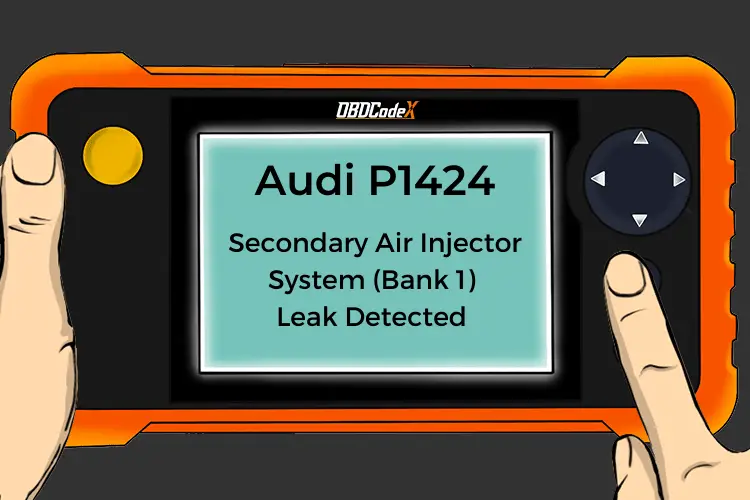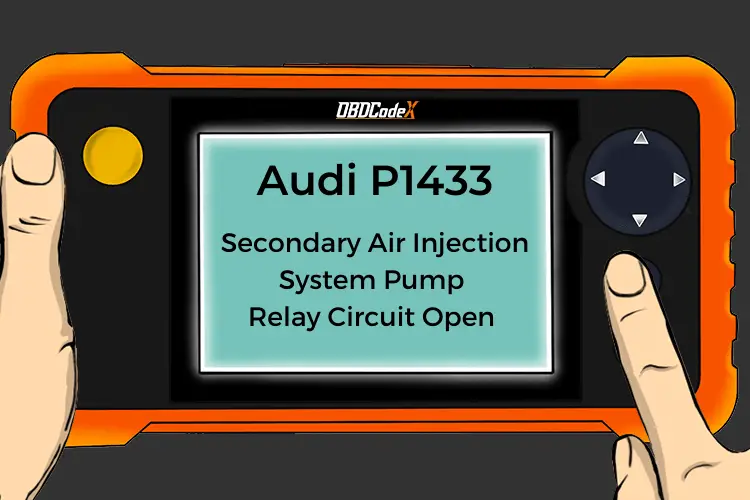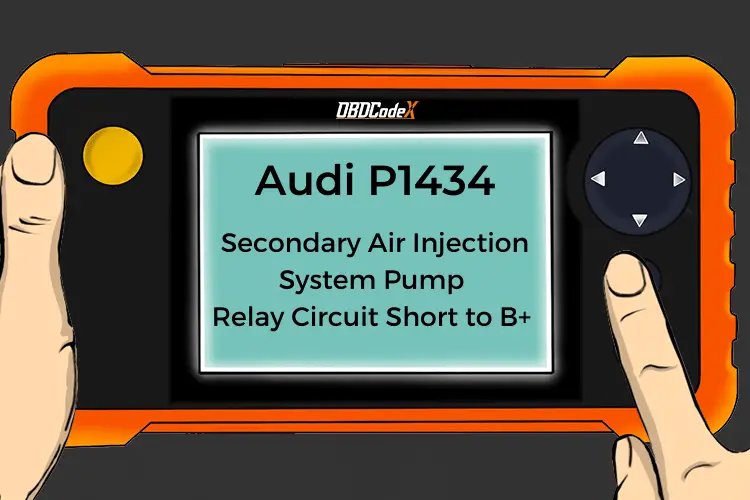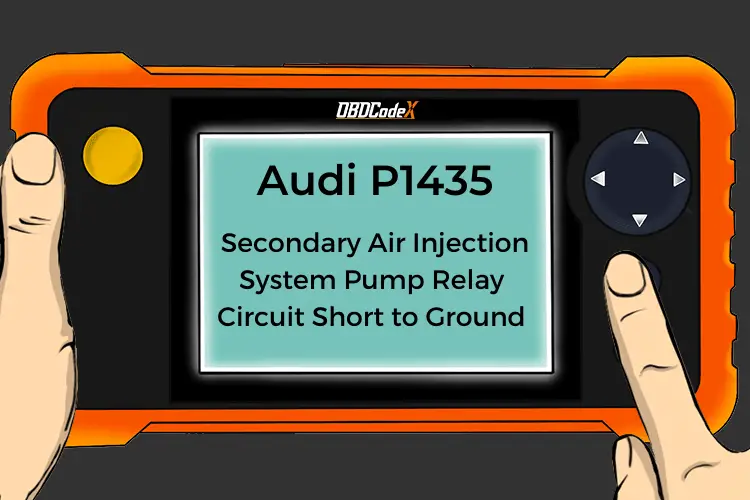P0419: Secondary Air Injection System Relay B Circuit Malfunction
Is your scanner showing P0419?
No worries. We'll show you what it means and how to deal with it.
P0419: Secondary Air Injection System Relay B Circuit Malfunction
OVERVIEWWhat Does The P0419 Code Mean?
When I come across a stored code P0419, I know that the powertrain control module (PCM) has detected a malfunction in a secondary air injection (SAI) system relay circuit. The B designation denotes a particular relay in a system that uses more than one.
Modern automobiles use SAI systems as a method of reducing harmful exhaust emissions with the introduction of ambient air into the engine exhaust system. SAI designs include either a belt driven pump or an electric pump to draw-in ambient air, compress it slightly, and inject the pressurized air into the engine exhaust manifolds. The PCM electronically controls one-way valves, switching valves, anti-backfire valves, and bypass valves to regulate and distribute air pressure and protect the SAI pump.
Fluctuations in SAI system pressure are monitored by the PCM using voltage input signals from one or more pressure sensors. When SAI pressure falls below a certain degree, the PCM electronically opens the necessary valves and allows secondary air to be pumped into the exhaust system. Engine temperature, engine RPM, and vehicle speed are also considered in SAI pump activation.
In vehicles that are equipped with electric pumps, the PCM monitors SAI pressure sensors and activates the pump when required. The system relay serves to transfer battery voltage from the fuse panel or fusible link to the SAI pump.
If the PCM detects a voltage input signal from the SAI relay (designated as B) circuit that indicates a malfunction has occurred, a code P0419 will be stored and a malfunction indicator lamp may be illuminated.
Other secondary air injection system trouble codes include P0410, P0411, P0412, P0413, P0414, P0415, P0416, P0417, P0418, P041F, P044F, P0491, and P0492.
What Are The Symptoms Of The P0419 Code?
Symptoms of this code may include:
- Frequently, there are no symptoms exhibited with a stored code P0419
- No SAI pump activation
What Are The Potential Causes Of The P0419 Code?
Potential causes for this code to set are:
- Defective SAI pump relay
- Shorted wiring, components, and/or connectors in the SAI system
- Defective SAI pump
- Blown SAI system fuses
How Serious Is This P0419 Code?
There is no need to address a stored code P0419 with great urgency. The SAI system is associated only to exhaust emission reduction and is not essential to engine operation.
How Can You Fix The P0419 Code?
In order to accurately diagnose a code P0419, a diagnostic scanner, a digital volt/ohmmeter (DVOM), and a reliable vehicle information source (like All Data DIY) will be required.
Step 1
Inspect system wiring, connectors, and the serpentine belt which drives the pump (if applicable) to begin your diagnosis. Repair or replace burnt, corroded, or damaged circuits as required and retest the system. Check system fuses and relays at this time if the SAI pump is driven by an electric motor.
Step 2
Proceed by connecting the scanner to the vehicle diagnostic port and retrieving all stored codes and freeze frame data, should your visual inspection indicate no obvious malfunctions. You will want to write this information down because it may come in handy later. Next, clear the codes and test-drive the vehicle to see if the P0419 is reset.
Step 3
Find technical service bulletin (TSB) entries that match the code/s and symptom/s exhibited by the vehicle in question using your vehicle information source. The data from hundreds-of-thousands of repairs is used to make up TSBs and the information contained therein can be very helpful in reaching an accurate diagnosis.
In extreme cold weather conditions, belt driven SAI pumps are prone to seizure from frozen condensation. To prevent condensation from reaching the SAI pump, a one-way check valve is usually integrated into the air inlet hose. These valves are known to fail and permit condensation from the exhaust to enter the SAI pump. The ice (frozen condensation) either causes the SAI pump to seize (belt driven) or to bind and blow a fuse (electric pump).
Step 4
You may use the scanner to activate the electric SAI pump. After the pump has been activated, use the DVOM to test voltage and ground. Suspect a blown fuse or a bad power supply relay if no voltage is detected. Use the DVOM to check for an open circuit between the power supply source and the pump if all fuses and relays are good. Before using the DVOM to check circuit resistance, disconnect all related controllers.
Step 5
Using the DVOM, check individual circuit resistance and continuity. Repair or replace circuits that appear to be open or shorted.
Additional diagnostic notes:
- Blown fuses are usually a reaction to a shorted circuit and not the source of the malfunction
- Frozen pumps may be allowed to thaw before use to avoid catastrophic pump damage
Recommended Parts
Below are some recommended auto parts to help you address the trouble code affecting your vehicle and get it running smoothly again:
Note: During the purchasing process, please check carefully whether the part you want to buy fits your car!
Reference Sources
P0419 Secondary Air Injection System Relay B Malfunction, OBD-Codes.








